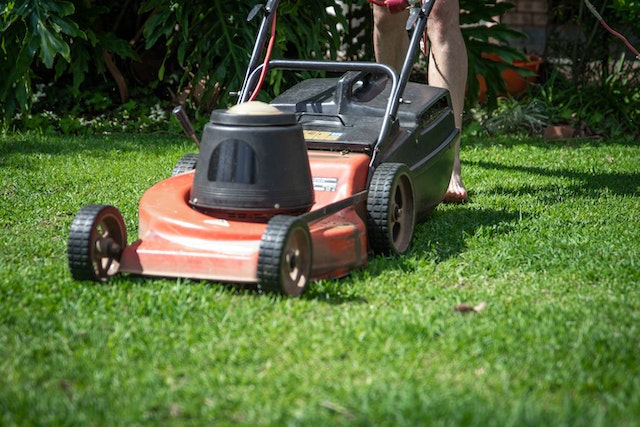
When did people start having lawns outside their houses? Probably from the early 16th century. The first use of the word “laune” is in 1540.
We need to differentiate between lawn and garden here because people have been gardening for thousands of years. A garden has basically been a space in front of a dwelling where the owner can grow things to eat. A lawn is an area of land covered with cultivated grass.
Gardening for pleasure instead of necessity probably appeared about 3000 BC with the rise of kingdoms and the wealthy classes. A lot of wealthy people and rulers put a lot of money into creating extravagant gardens. The Hanging Gardens of Babylon, one of the seven wonders of the ancient world, is probably a good example. Gardens would have had exotic plants and trees, buildings, and a host of other features, but probably no lawns. The Romans took gardening to a new level and had some incredible pleasure gardens. But again, they didn’t have lawns. They had open spaces with wild grasses, but not a lawn.
The lawn may have begun as a communal area in a village where livestock were grazed. These fields would kept separately to fields that were used for growing crops. In fact, the French word lande, which became the English laune, means “clearing”. A lot of wealthy people would have a laune around their house or castle because it allowed them to see people and enemies approaching.
The concept of “garden”, as we know it, didn’t come about until the 17th century and before the lawnmower was invented, gardens were a privilege of the rich. The only way to maintain a garden would be with a lot of laborers, which cost a lot of money. The well-kept lawn became a symbol of wealth and status. Anybody that could afford to keep a large piece of land for pleasure and not grazing or food production had to be wealthy.
One man made it possible for anyone to have a lawn and that one man was Edwin Beard Budding. He was an engineer, and he invented the lawnmower in 1830. He saw a machine in a local cloth mill that was used to trim the irregular bits off the top of woolen cloth to make it smooth. This machine was fixed to a bench and had a cylinder with blades that rotated. Budding thought that if he could work out a way to fix the bladed cylinder to wheels, he would be able to use it to cut grass. And that’s what he did. He went into partnership with John Ferrabee and produced cast iron lawnmowers. They had a heavy roller at the back that would roll when the lawnmower was pushed, transferring power to the grass cutting cylinder at the front via gears.
Budding’s invention meant that middle-class people could have a lawn that mimicked those of the upper-class and the tradition began to spread. It would take Budding another ten years before he had a lawnmower that was successful. It took the invention of steel alloy to allow this because his lawnmower had been made of heavy cast iron.
The second thing that added to the growth of lawns was the increase of suburbanization. During the late 18th century and the early 19th century, there was a huge migration from rural areas to the cities. This started in the UK with the Industrial Revolution, but it happened in every developed country at later dates. The creation of factories made a gap in the labor market for laborers and people flooded in, thinking the wages would be higher. Before this, wealthy and middle-class people had wanted to live in the center of cities because that was where their work was and where the money was. As the populations blossomed, the wealthy and those that could afford to decided that they didn’t want to live in the cities anymore and they started to move out. This was the birth of suburbia. Living outside the city meant that people had more space and it became more possible to have lawns.
So, the invention of the lawnmower, and subsequent innovations that made it cheaper, smaller, and lighter, coupled with the growth of suburbia, made it possible for regular people to have a small garden of their own. So, thanks to Edwin Beard Budding, we can have gardens outside our houses. And that is what I learned today.
Sources
https://en.wikipedia.org/wiki/History_of_gardening
https://en.wikipedia.org/wiki/Lawn
https://www.gardensillustrated.com/feature/the-history-of-lawns/
https://en.wikipedia.org/wiki/Suburb
